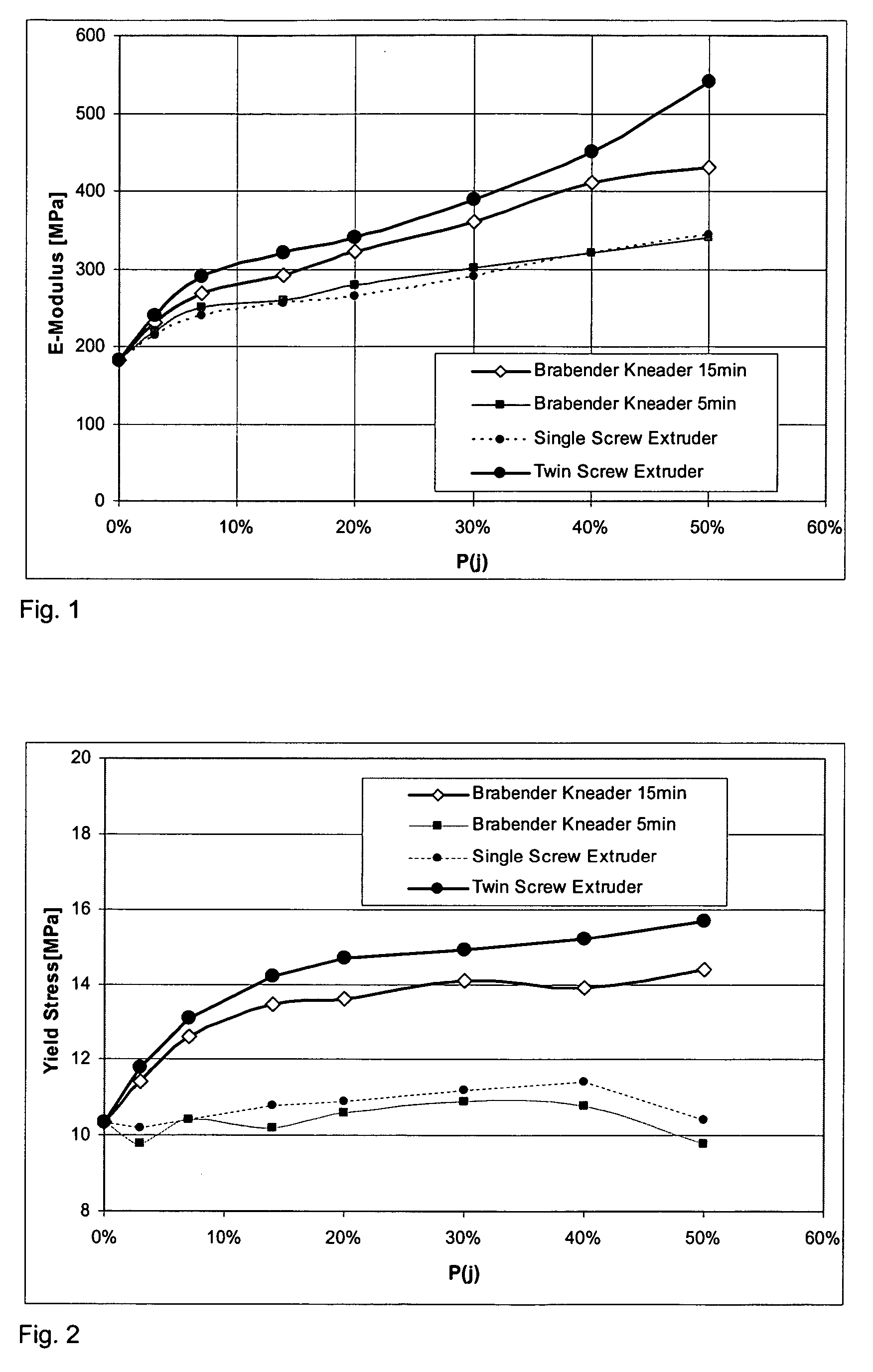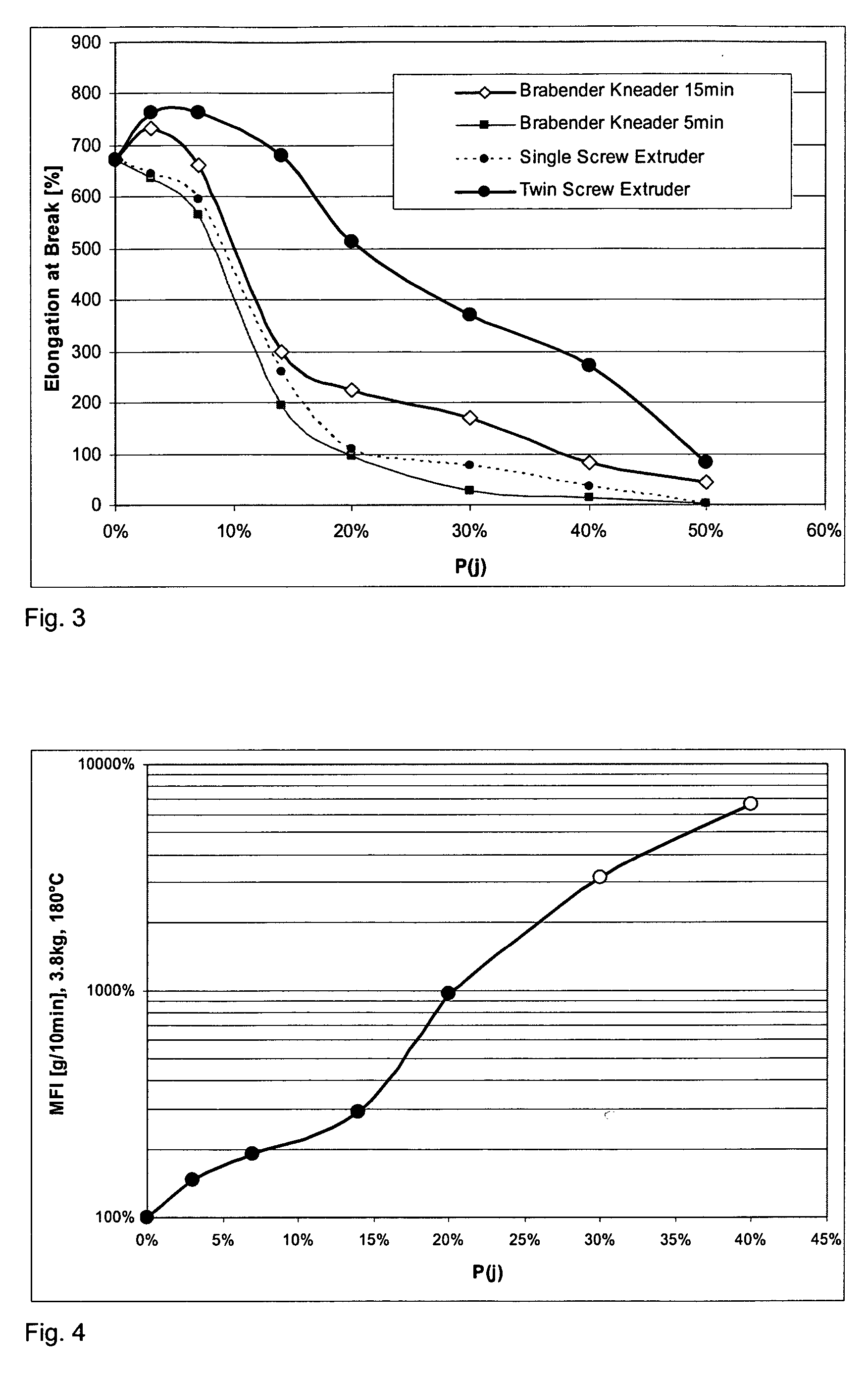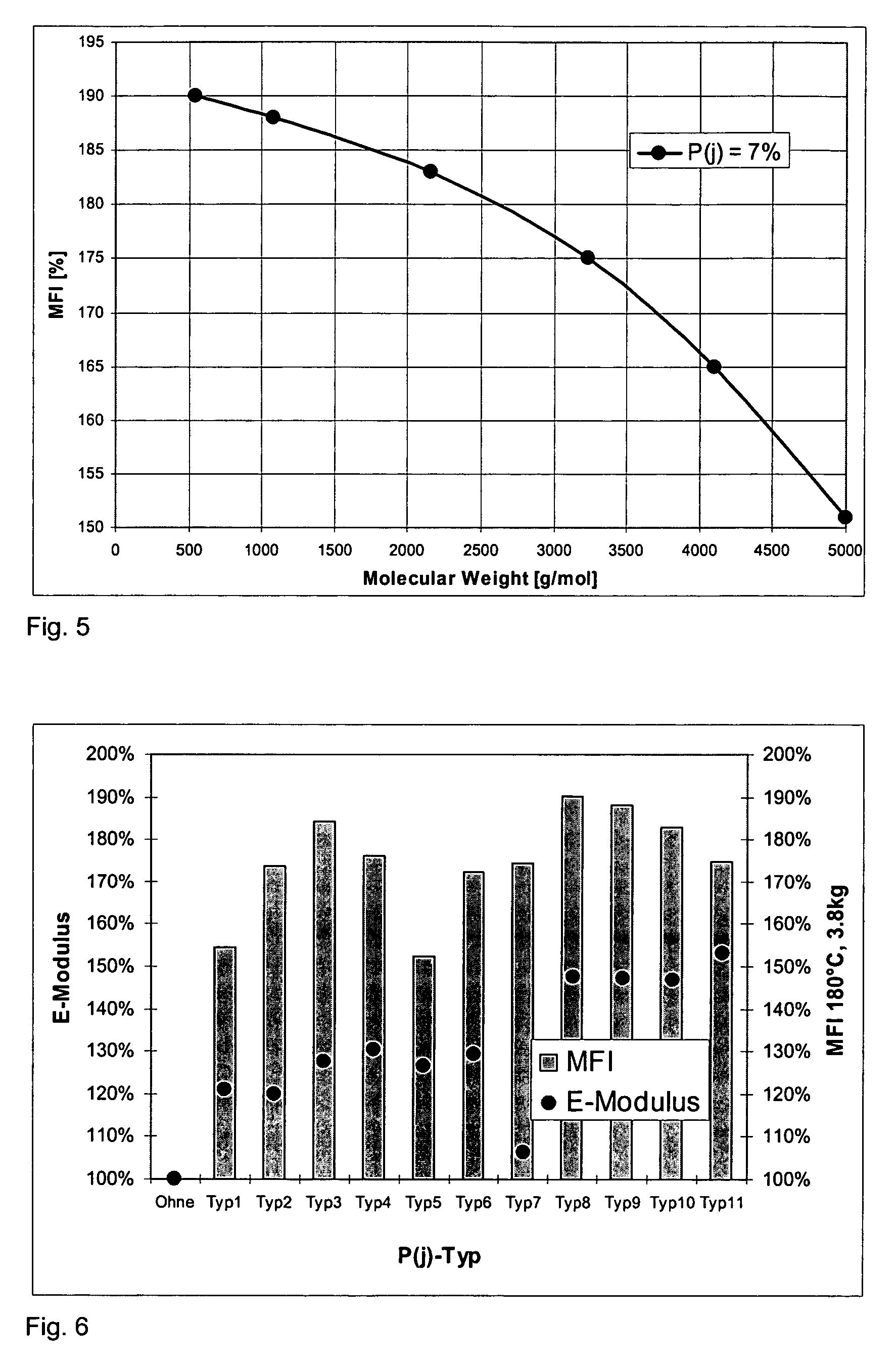Polymer networks
- Summary
- Abstract
- Description
- Claims
- Application Information
AI Technical Summary
Benefits of technology
Problems solved by technology
Method used
Image
Examples
examples
Preparation of Polymer Mixtures
Brabender Chamber Kneader
[0025] The polymer P(i) was first plasticised at a chamber temperature of 170° C. and then the polymer P(j) was added to the melt of P(i) over a period of about 2 min. The speed was 100 rpm and the total mixing time was varied between 5 and 10 min. The mass temperatures were in the range of 170-195° C., with increasingly lower mass temperatures being achieved with increasing fraction of P(j).
[0026] The mixture was pressed into 0.5 mm films in a plate press at 180° C., left at this temperature for 5 min after which the press was cooled rapidly with a maximum throughput of cooling water.
Double-Screw Extruder
[0027] In FIGS. 8-11 discussed below, the refrence numerals 1 through 8 refer to the following: [0028]1) Preparation extruder; [0029]2) Solid dosing device for P(i); [0030]3) Solid dosing device for P(j); [0031]4) Extrusion nozzle; [0032]5) Second solid dosing device for P(j); [0033]6) Pre-compound or master batch of P...
PUM
| Property | Measurement | Unit |
|---|---|---|
| Current | aaaaa | aaaaa |
| Current | aaaaa | aaaaa |
| Current | aaaaa | aaaaa |
Abstract
Description
Claims
Application Information
 Login to View More
Login to View More - R&D
- Intellectual Property
- Life Sciences
- Materials
- Tech Scout
- Unparalleled Data Quality
- Higher Quality Content
- 60% Fewer Hallucinations
Browse by: Latest US Patents, China's latest patents, Technical Efficacy Thesaurus, Application Domain, Technology Topic, Popular Technical Reports.
© 2025 PatSnap. All rights reserved.Legal|Privacy policy|Modern Slavery Act Transparency Statement|Sitemap|About US| Contact US: help@patsnap.com



